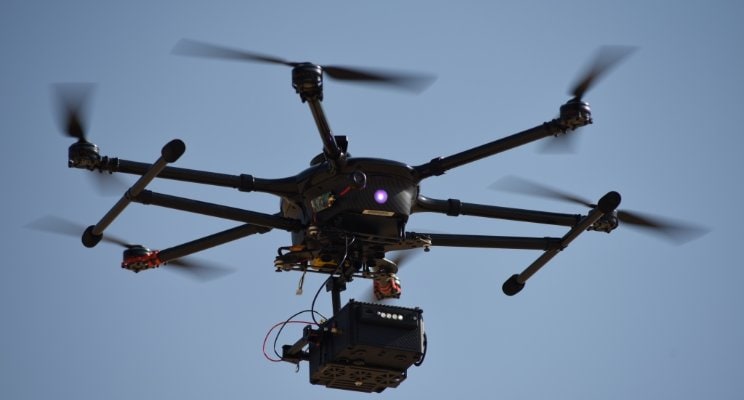Much has been made of re-supplying vessels at sea using “unmanned aerial systems (UAS)”, or: drones. The first tests demonstrated that various barriers still need to be overcome to make this a feasible option for the maritime industry. So, is this really the area where we should expect the deployment of drones in the short run? This article highlights the key areas where we will truly see a positive impact of drones in the maritime industry within the next few years.
Hurdles to cross
A significant milestone was reached in January 2016 when a drone made an at-sea delivery of a package of Danish cookies weighing less than three pounds. The drone covered a distance of just 247 meters and was launched from a tugboat as the poor weather conditions prevented the drone to take-off from shore. The promise of using drones for e.g. emergency supplies of medicine and spare parts are obvious. However, further investments are required in at least three areas before drones will become an established way of re-supplying vessels: (a) the distance a drone can travel, which is primarily limited by its battery-power, (b) ability to handle heavier payloads, and (c) be more universal in its usage. That’s why the industrial use of drones in the short run will primarily focus on inspection and surveillance.
Application areas of drones in the coming years
Within the maritime industry, we traditionally rely on specialized personnel to access confined and potentially hazardous spaces on a vessel. AkzoNobel Marine Coatings employs many hundreds of highly-skilled technical experts who climb into e.g. cargo and water ballast tanks to verify the proper application of coatings systems. All across the world you will find these experts dressed in their distinctive blue boiler-suits with the well-known red propeller logo of the International® brand. Their invaluable work requires a thorough understanding of safety procedures and a very high level of expertise and experience to make a full and proper assessment of a vessels condition. Drones offer the potential to access such spaces without exposing any human to the potential hazards of corrosive, toxic or flammable substances. Instead, our technical expert will be able to access the images and readings sent by the drone from a safe distance. Drones will become the eyes-and-ears of the technical experts, class societies and surveyors.
Cargo and water ballast tank inspections
Another industry milestone was reached when AkzoNobel Marine Coatings announced its project with DroneOps, Barrier Coatings, Safinah Ltd and a major oil company. The consortium is well underway to develop equipment, concepts and procedures for the remote inspection of water ballast tanks and off-shore wind farms. The project aims to address the many challenges faced with the view to improve the inspection of these structures and at the same time reduce the risk for inspectors. This project is the first of many where AkzoNobel embraces the use of drones for all types of inspection activities.
Drones are a piece in a bigger puzzle

We shouldn’t lose sight of the fact that drones do not add a lot of value to the industry in and by themselves. Other developments are equally critical to develop a truly comprehensive solution for the maritime industry. AkzoNobel Marine Coatings is investing in programs with universities and third parties in complementary technologies which are all required to work seamlessly with drone technology. To mention just a few examples:
- Software development to guide a drone safely through a vessel and capture images in a coordinated manner
- Image recognition in order to enhance and reliably interpret the data which is captured by the cameras on the drones
- Over the decades, AkzoNobel’s International brand has built up the largest database in the industry on surface conditions (e.g. roughness), corrosion and antifouling performance. This data source, coupled with global environmental parameters, provides a dataset of 3.5 billion points which has enabled us to analyse and predict performance using with big data technology.
- AkzoNobel’s patented Intertrac system matches environmental “big data” with the trading patterns of the global merchant fleet. This allows our team of coating scientists, hydrodynamic experts and marine biologists to assess the fouling challenge and predict performance for every vessel in any location at sea.
Conclusion
Already within the next years drones will start playing an increasingly important role in the area of inspection and surveillance within the maritime industry. For reasons of safety and accessibility we will focus on the inspection of cargo and water ballast tanks first. AkzoNobel, together with its partners, will quickly extend the use of drones into other areas.
However, drones are only one part of a much bigger puzzle. In parallel AkzoNobel Marine Coatings is investing in other areas of transformational innovation like big data, corrosion and fouling expertise, image recognition, etc. All of these initiatives play a critical part in our vision for the future to increase effectiveness and efficiencies in the entire maritime value chain. The reduction in waste, both in time and resources, is good news for the much needed improvement in sustainability.

Contact us

We are here to help
Speak with one of our experts to discuss how we can get the best results for your area of application.



